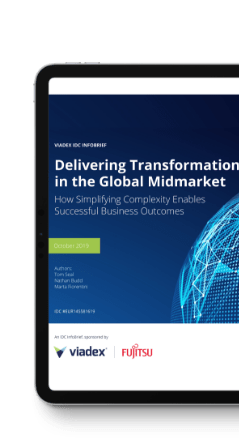SASE: Redefining User Experience Through Cloud-Centric Security

In the dynamic landscape of modern business, user experience is a critical factor that directly impacts productivity, collaboration, and overall organizational success. Secure Access Service Edge (SASE) stands as a beacon of innovation in this regard, promising a seamless and positive user experience through its cloud-based architecture and user-centric policies. In this article, we delve into how SASE is redefining the way organizations provide secure access without compromising performance, ushering in a new era of user-centric security.
The Challenge of Balancing Security and User Experience
Traditional Approaches and Trade-Offs
Historically, organizations faced a dilemma when it came to implementing security measures. Striking the right balance between robust security and a positive user experience was often challenging. Traditional security solutions, while effective in protecting against threats, could introduce latency, complexity, and hinder the seamless access to resources that users demand.
Changing Dynamics in the Digital Age
As the digital landscape evolves, the way we work and connect to networks has undergone a paradigm shift. Remote work, reliance on cloud services, and the proliferation of mobile devices demand a security approach that is agile, responsive, and aligned with user expectations. SASE steps into this void, offering a transformative solution that prioritizes both security and user experience.
SASE’s Cloud-Centric Architecture
The Power of Cloud-Native Design
At the heart of SASE’s impact on user experience is its cloud-centric architecture. Unlike traditional security models that rely on routing traffic through on-premise appliances, SASE leverages cloud resources strategically placed at the network’s edge. This proximity ensures faster, more direct access to applications and data, reducing latency and enhancing overall performance.
Optimizing Access with Edge Computing Integration
SASE doesn’t stop at leveraging the cloud for data routing; it goes a step further by integrating edge computing capabilities. Edge computing brings computational resources closer to the user, reducing the distance data must travel. This integration optimizes access to resources, leading to faster response times and a more responsive user experience.
User-Centric Policies: A Game-Changer
Dynamic and Adaptive Security Policies
One of the key features that sets SASE apart is its focus on user-centric policies. Traditional security models often apply a one-size-fits-all approach, leading to restrictions that can hinder productivity. SASE, on the other hand, tailors security policies based on user identity, device security posture, and the sensitivity of the data being accessed. This dynamic and adaptive approach ensures that security measures align with the specific needs and context of each user, providing secure access without unnecessary restrictions.
Seamless Authentication and Authorization
SASE’s user-centric policies extend to authentication and authorization processes. With the implementation of a Zero Trust security model, SASE ensures that every user and device, regardless of their location, is subject to continuous verification before accessing resources. This seamless yet robust authentication process enhances security without causing friction in the user experience.
The Impact on Remote Workforces
Empowering Remote Access
In an era where remote work has become the norm, providing secure and seamless access to resources is crucial. SASE, with its cloud-centric approach, ensures that remote workforces can connect to the corporate network with the same level of security and performance as if they were in the office. This empowerment translates into increased productivity and a positive user experience for employees working from various locations.
Collaboration Tools and Real-Time Communication
The user experience is not only about accessing resources but also about the smooth functioning of collaboration tools and real-time communication. SASE’s reduced latency and optimized access contribute to the seamless performance of video conferencing, voice calls, and messaging applications. This improvement fosters efficient collaboration among teams, regardless of their physical location.
Achieving Operational Efficiency
Reduced Administrative Burden
SASE’s user-centric approach also has implications for network administrators. The centralized control and policy orchestration inherent in SASE reduce the administrative burden on IT teams. With user-centric policies that adapt to changing needs, administrators can focus on strategic initiatives rather than dealing with routine access and security configurations.
Cost Savings Through Efficiency
The streamlined administrative processes and improved operational efficiency facilitated by SASE contribute to cost savings. With fewer manual configurations and faster deployment of security measures, organizations can optimize their resources and direct budgetary allocations toward strategic initiatives rather than routine maintenance.
Conclusion: SASE’s User-Centric Security Paradigm
In the evolving landscape of digital transformation, where the user experience is paramount, SASE emerges as a transformative force. Its cloud-centric architecture, focus on user-centric policies, and seamless integration of edge computing, redefine how organizations provide secure access without impacting performance. The result is not just a secure network, but a positive and agile user experience that aligns with the expectations of the modern workforce. As organizations navigate the challenges of the digital age, SASE stands as a beacon, illuminating a path where security and user experience coexist harmoniously, fostering productivity, collaboration, and success.




